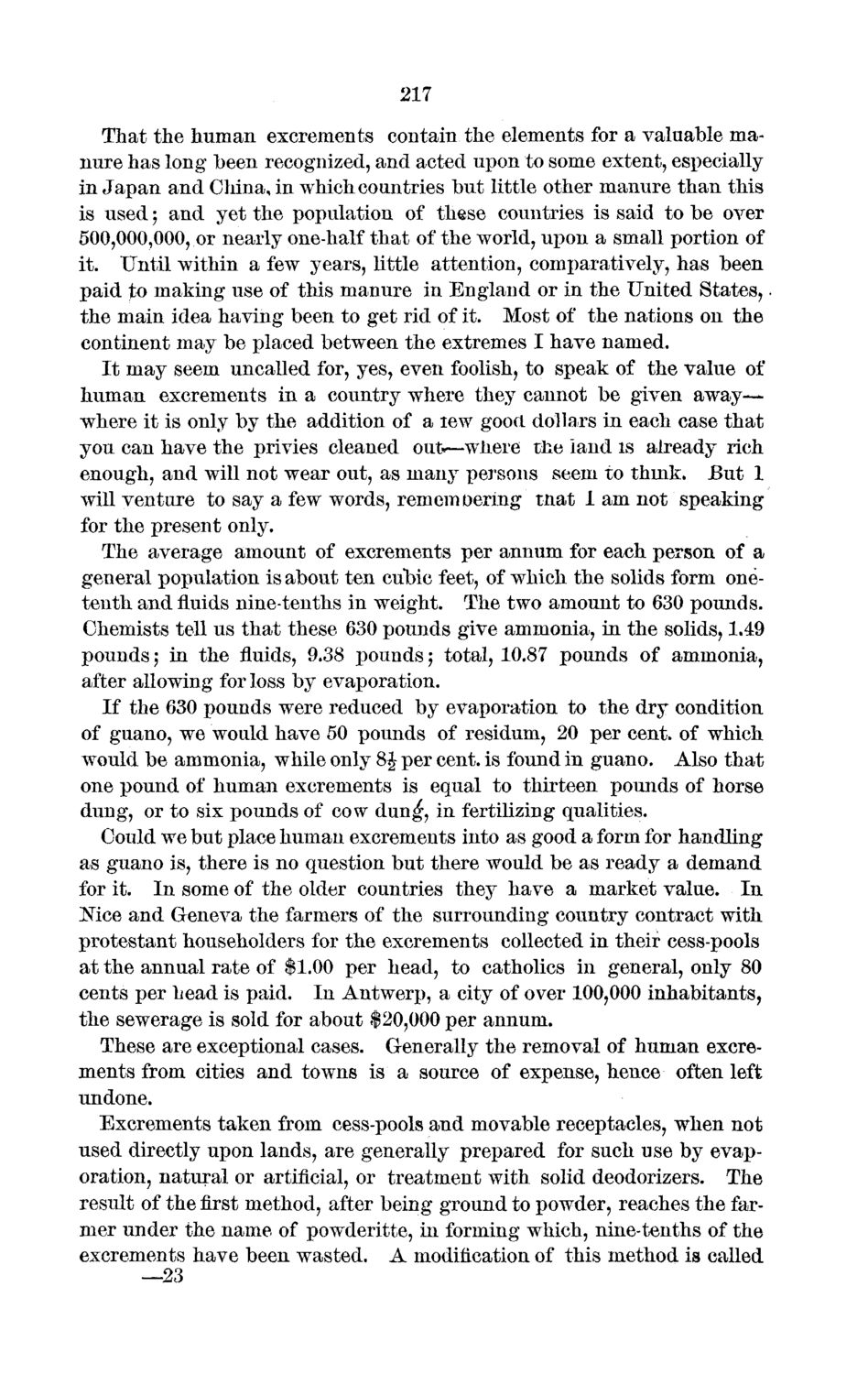| |
| |
Caption: Board of Trustees Minutes - 1872
This is a reduced-resolution page image for fast online browsing.

EXTRACTED TEXT FROM PAGE:
217 That the human excrements contain the elements for a valuable manure has long been recognized, and acted upon to some extent, especially in Japan and China, in which countries but little other manure than this is used; and yet the population of these countries is said to be over 500,000,000, or nearly one-half that of the world, upon a small portion of it. Until within a few years, little attention, comparatively, has been paid to making use of this manure in England or in the United States,. the main idea having been to get rid of it. Most of the nations on the continent may be placed between the extremes I have named. It may seem uncalled for, yes, even foolish, to speak of the value of human excrements in a country where they cannot be given away— where it is only by the addition of a tew good, dollars in each case that you can have the privies cleaned out-—where the land is already rich enough, and will not wear out, as many persons seem to think. But 1 will venture to say a few words, rememDering tnat 1 am not speaking for the present only. The average amount of excrements per annum for each person of a general population is about ten cubic feet, of which the solids form onetenth and fluids nine-tenths in weight. The two amount to 630 pounds. Chemists tell us that these 630 pounds give ammonia, in the solids, 1.49 pounds $ in the fluids, 9.38 pounds; total, 10.87 pounds of ammonia, after allowing for loss by evaporation. If the 630 pounds were reduced by evaporation to the dry condition of guano, we would have 50 pounds of residum, 20 per cent, of which would be ammonia, while only 8J per cent, is found in guano. Also that one pound of human excrements is equal to thirteen pounds of horse dung, or to six pounds of cow dun^, in fertilizing qualities. Could we but place human excrements into as good a form for handling as guano is, there is no question but there would be as ready a demand for it. In some of the older countries they have a market value. In Mce and Geneva the farmers of the surrounding country contract with protestant householders for the excrements collected in their cess-pools at the annual rate of $1.00 per head, to catholics in general, only 80 cents per head is paid. In Antwerp, a city of over 100,000 inhabitants, the sewerage is sold for about $20,000 per annum. These are exceptional cases. Generally the removal of human excrements from cities and towns is a source of expense, hence often left undone. Excrements taken from cess-pools and movable receptacles, when not used directly upon lands, are generally prepared for such use by evaporation, natural or artificial, or treatment with solid deodorizers. The result of the first method, after being ground to powder, reaches the farmer under the name of powderitte, in forming which, nine-tenths of the excrements have been wasted. A modification of this method is called —23
| |